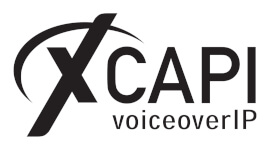Voice over IP
ActFax and VoIP (Voice over IP)
ActFax can not only be used with traditional analog and ISDN (T1/E1) phone lines, it is also
possible to run ActFax directly through VoIP (Voice over IP) and FoIP (Fax over IP).

In case you cannot use or do not want to use Voice over IP, using ActFax in combination with a
Web Fax Provider would be a cost-efficient alternative to VoIP that can be
implemented very easily.
VoIP Interface Software

When sending fax documents through VoIP, the quality of the VoIP connection has great unfluence on the success rate of fax
transmissions. It is recommended to use VoIP gateways supporting the T.38 protocol (Fax over IP), to guarantee failure-free
data exchange between the fax server and the IP gateway. If the T.38 protocol is not supported by the VoIP gateway, a speech channel (G.711
protocol) is used for fax transmissions. In such a case, the success rate of the fax transmissions mainly depends on the quality of the
VoIP connection; this is because run-time of data packets submitted in IP networks is variable. We recommend to contact
your provider to make sure your VoIP connection is compatible with fax transmissions in that case.
Installation on Virtual Machines

XCAPI Licensing
